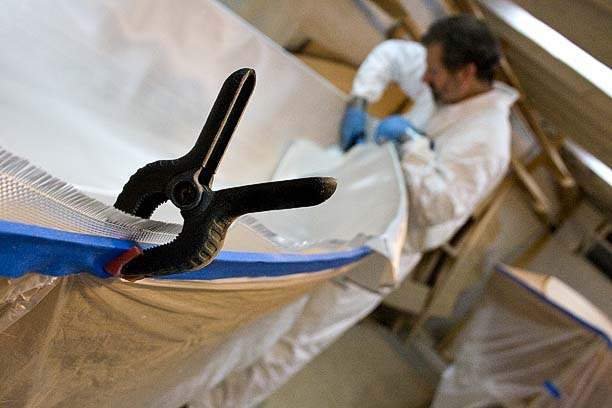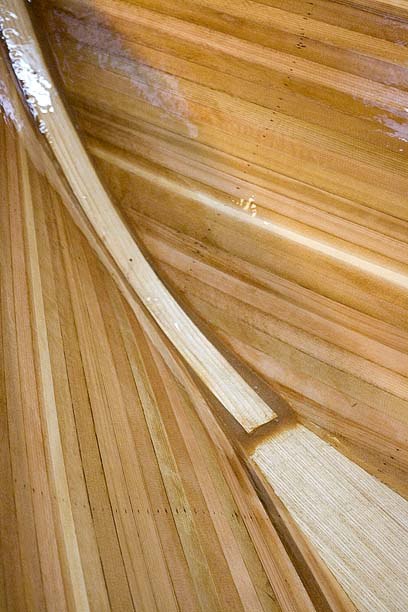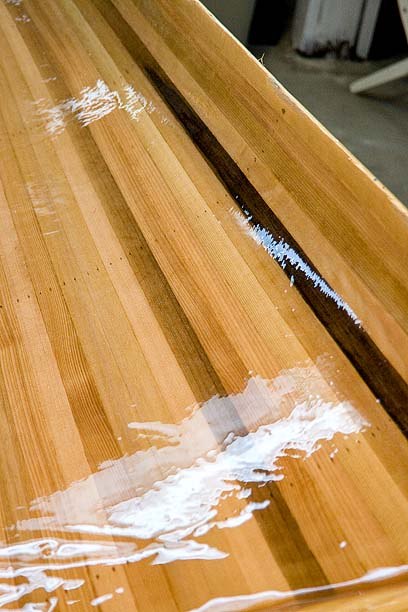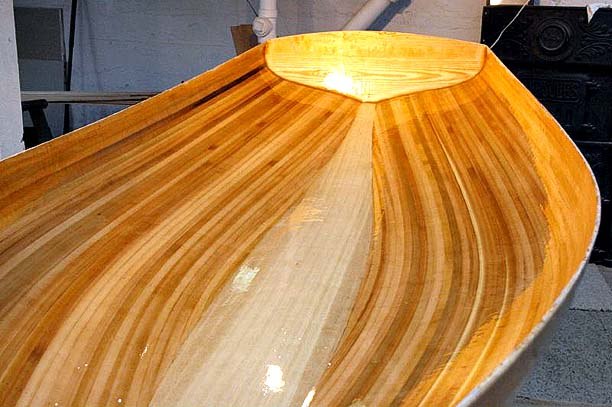Strip detail, glassed inside
Passed another big milestone this weekend. After 36 hours of work, both hulls are glassed inside, and that should be the end of the fiberglassing marathons.
I decided to embrace the staple holes and didn’t bother trying to fill them. They’ve become invisible to me already. They’re a basic part of the construction process anyway, seems dishonest to try and hide them.
Getting the fiberglass cloth to conform to the hollows of the hulls was easier than expected. Often the cloth wants to buckle on the insides of curves, especially in the bow, and other builders report really struggling to get it to lay flat. For whatever reason, that didn’t happen, though it threatened to. Starting the wet-out at the bows and working back may have helped, as it left a much larger area to spread out the puckers.
The only places I’ve ever had a boat fail structurally are the bow and the stern. There’s a lot of stress on both parts. In addition to the twisting of the hull under weight and wave, which is focused at both points, all the force of the sail and mast is leveraged against the inner stem, and the rudder is hinged against the transom. That’s a lot of stress. On top of that, the corners and crevices in both areas are hard to keep clean. The dirt that collects there holds water for long periods of time. Moisture and dirt breed wood eating bacteria, so these places are often the first to rot. My brother once went to drag an old boat of mine down to the water for a sail, and the whole transom came off in his hand. A sad day, indeed, but would have been sadder had it come off while one of us was out on the water.
To help prevent this, and make maintenance easier, I filled the seams along the inner stems and transoms with solid fillets of thickened epoxy. It may not be the most attractive solution, but these areas will be well under the decks out of view, where they’re also almost impossible to reach for cleaning. Prior to glassing, the only thing holding the planks in place on these pieces is a little bead of water soluble glue, so a good solid waterproof bond is a good thing.
When laying out the cloth I made sure to overlap with two layers in both places to double up the strength. Same thing for the full length of the keels, which now have a total of four layers – two inside and two out.
Technical stuff aside, the hulls actually look good. It’s one part of the boat you’ll see a lot of while sailing, so it’s nice they turned out well.
melonseed skiff, mellonseed skiff, melon seed, mellon seed












